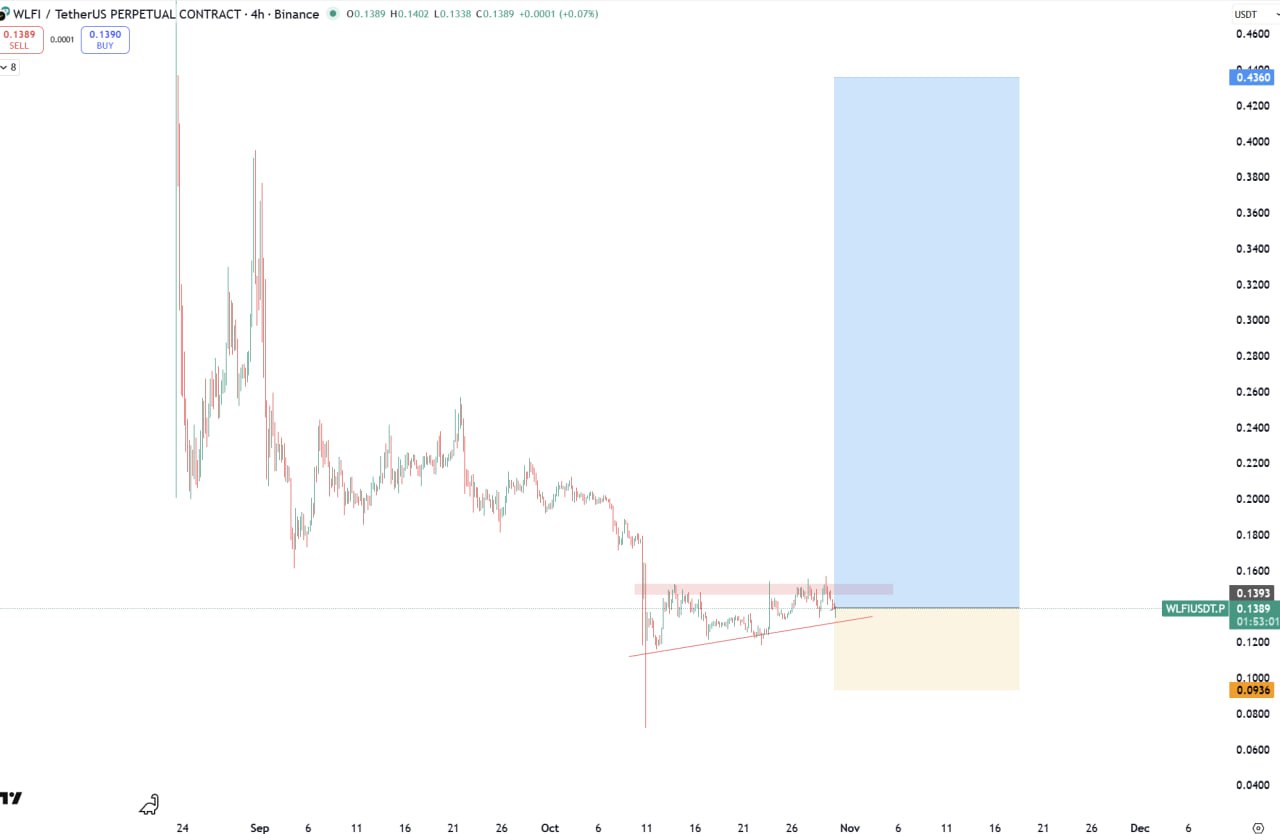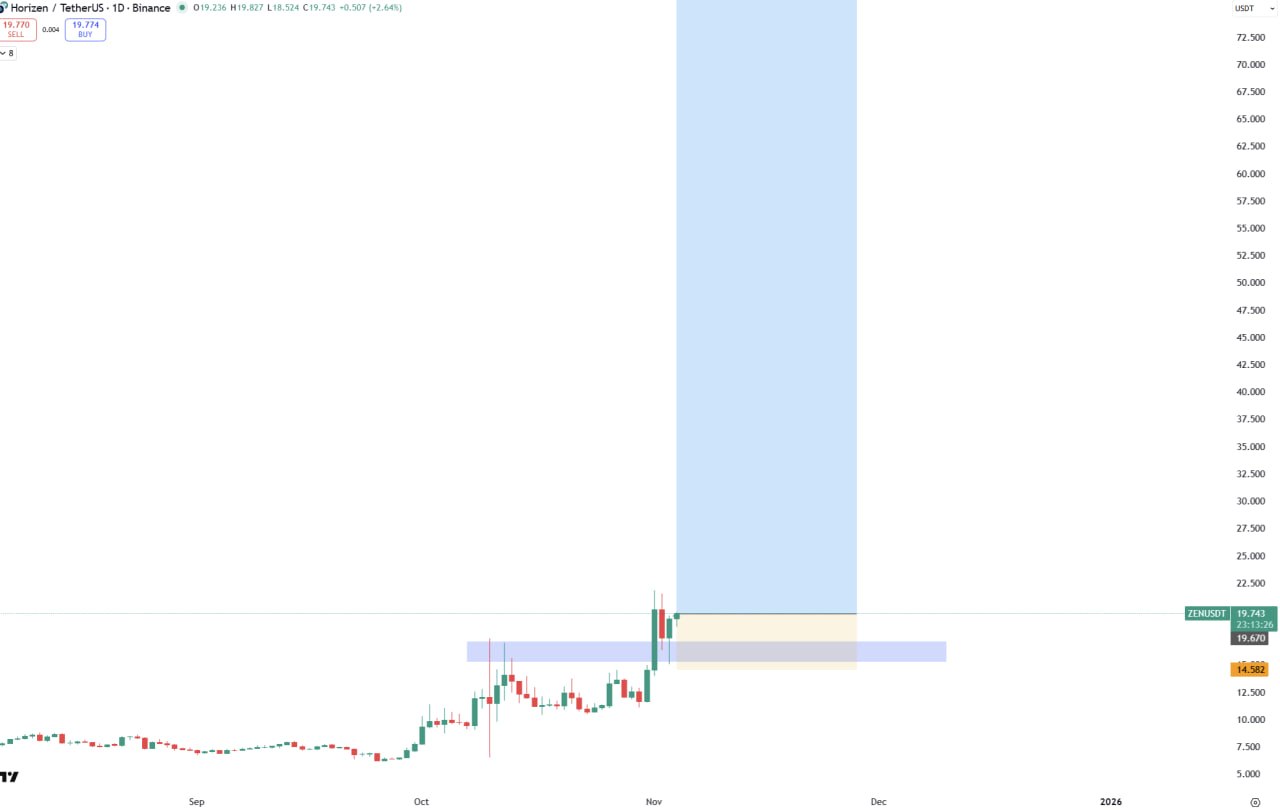WLFI/USDT.P — Long
2025-10-30 09:08
Long WLFI at 0.1389, scale out at 0.14 | 0.145 | 0.15, protective stop at 0.0936.

If the TradingView symbol is unavailable, use the annotated image as reference for target zones & invalidation.
WLFI/USDT.P Long Trade Signal — October 30, 2025
This idea targets a long entry near 0.1389 in WLFI, with staged take-profits at 0.14, 0.145, and 0.15, and a hard stop at 0.0936. The instrument is a lower-cap token with episodic liquidity surges; therefore, the strategy leans on precision and discipline: buy the base, sell the first expansion, protect the remainder with structure-aware trailing.
Market Context
Tokens in the nexus of payments, stablecoin rails, and consumer-facing use cases have attracted attention. WLFI’s order books have thickened modestly compared with earlier months, yet remain vulnerable to air pockets. In this environment, the best entries are typically won during quiet moments when spreads are tight and aggressive sellers are exhausted. Chasing green candles in thin markets often results in poor average prices and fragile conviction.
Correlations with majors fluctuate; WLFI can decouple intra-day, but sustained moves usually align with broader risk appetite. News-sensitive spikes are common, and they can reverse quickly if the follow-through is not supported by spot flows. Because of that, the trade design uses conservative first targets and emphasizes fast partials—collecting small wins repeatedly beats swinging for home runs in instruments that whipsaw.
Technical Analysis
Structure: Price has built a rounded micro-base above 0.13 after rejecting deeper lows. The 4H shows a sequence of higher swing lows and shallow pullbacks, with wicks being absorbed by passive bids near 0.135–0.137. A push through 0.14 on real volume would confirm continuation, with 0.145 and 0.15 acting as logical magnets where resting offers are likely parked.
- Trend: Early-stage uptrend on 1H/4H; daily trend attempting to turn after an extended down channel.
- Momentum: Momentum builds most effectively after volatility compression; look for contraction bands tightening before expansion.
- Volume: Healthy impulses display expanding volume; fades without volume confirmation are prone to stall.
- Liquidity: Depth improves during U.S. and EU hours; outside those windows, be cautious with order size.
Key Levels
- Entry: 0.1389 (prefer fills between 0.1378–0.1395 if slippage is small)
- Targets: 0.14 → 0.145 → 0.15
- Stoploss: 0.0936 (beyond the prior capitulation wick, keeping invalidation unambiguous)
- Support: 0.135 (near-term) and 0.128 (deeper support)
- Resistance: 0.142–0.146 (offer stack), 0.150–0.154 (round-number cluster)
Execution Plan
- Enter on pullbacks that hold above 0.137 with higher-low structure on 15m/1H; avoid entries immediately after sharp spikes.
- Take first profits at 0.14 to reduce cost basis; advance stop to breakeven on a closing basis if 0.14 holds as support.
- Scale additional size at 0.145; consider trailing the remainder using a swing-low stop or an ATR-based method to respect volatility.
- Into 0.15, either complete the exit or leave a small runner only if the tape is one-way with clear bid dominance.
Invalidation & What to Watch
A decisive close back below 0.13 with heavy volume would argue that the base failed. If liquidity vanishes and spread widens beyond your tolerance, step aside. Also monitor funding: if it flips persistently positive into resistance, that often signals crowded longs; conserving gains is rational in that case.
Risk Management
Low-cap or mid-cap perps demand humility. Keep risk per trade small (e.g., ≤0.5–1.0R of your daily risk budget). Because WLFI can gap, use a hard stop and avoid oversized positions. Consider a two-tier stop approach: initial hard stop at 0.0936 and an adaptive stop that trails under 1H higher lows once the first target pays. Remember that protecting capital is a force multiplier—preserved cash flow lets you re-attempt the setup if structure rebuilds.
- Prefer limit orders; dark liquidity and thin books can punish market orders.
- Respect daily loss limits to prevent revenge trading.
- Scale out systematically; discretionary exits under stress usually sell lows and buy highs.
- Never anchor to PnL; anchor to plan adherence.
This material is for education. It is not advice. Perpetual futures are risky; slippage and gaps can exceed modeled losses. You are responsible for your orders and risk limits.








